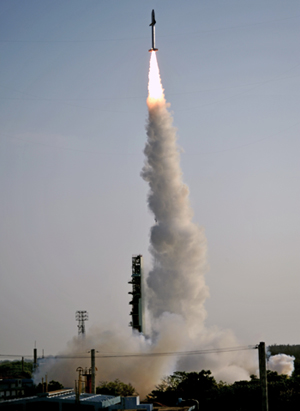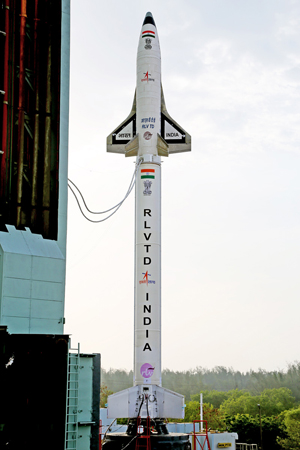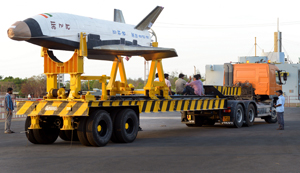INDIAN ARMED FORCES CHIEFS ON OUR RELENTLESS AND FOCUSED PUBLISHING EFFORTS

SP Guide Publications puts forth a well compiled articulation of issues, pursuits and accomplishments of the Indian Army, over the years

"Over the past 60 years, the growth of SP Guide Publications has mirrored the rising stature of Indian Navy. Its well-researched and informative magazines on Defence and Aerospace sector have served to shape an educated opinion of our military personnel, policy makers and the public alike. I wish SP's Publication team continued success, fair winds and following seas in all future endeavour!"

Since, its inception in 1964, SP Guide Publications has consistently demonstrated commitment to high-quality journalism in the aerospace and defence sectors, earning a well-deserved reputation as Asia's largest media house in this domain. I wish SP Guide Publications continued success in its pursuit of excellence.
Kickstarting space shuttle – Major milestone
 |
By Lt. General P.C. Katoch (Retd) Former Director General of Information Systems, Indian Army |



Even as Indian Space Research Organisation (ISRO) was poised to launch 22 satellites from a single mission in June 2016, on May 23, 2016, ISRO successfully launched its prototype space shuttle that splashed down as planned in the Bay of Bengal, some 450 km from Sriharkota. The launch was of the winged reusable launch vehicle (RLV), overall cost being 95 crore. After a successful lift on board a HS9 rocket booster that lasted 91.1 seconds to a height of about 56 km, the RLV-TD separated from the HS9 booster and further ascended to a height of about 65 km, then descending at about five times the speed of sound till splashdown to the defined landing spot. The vehicle was tracked during its flight from ground stations at Sriharikota and a shipborne terminal; validating critical technologies like autonomous navigation, guidance and control, and reusable thermal protection system. The flight duration from launch to splashdown was some 770 seconds.
While ISRO has undertaken tests of RLV technology twice in the past, several nations and private space entities have experimented with this technology. NASA had closed its 1981 initiated space shuttle program in 2011 after using its reusable vehicles Discovery, Endeavour, Columbia and Challenger, to launch the International Space Station and the Hubble Telescope. Interestingly, the DRDO had conducted a concept study in 2001 termed 'Avatar', acronym for 'Aerobic Vehicle for Transatmospheric Hypersonic Aerospace Transportaion'; concept being unmanned single-stage reusable space-plane capable of horizontal takeoff and landing. But this remained a study only and is not linked to ISRO's RLV-TD launch on May 23 this year.
ISRO's objective of developing the reusable system is to bring down the costs of satellite launch, and to increase the frequency of launches as satellites and scientific instruments need to ride on rockets to go into space. Reusable rockets would save costs of building a new vehicle for every launch besides saving on manufacturing time and enable more frequent launches. Without RLV technology, vehicles launched into space either fall into the sea or add to the flying debris in space.
Though much hard work lies ahead for developing the final space shuttle, what ISRO has demonstrated over the years is a remarkable sense of dedication and progress in the space arena at minimal costs.
Currently, it costs 6 to 8 lakh to send a one kg payload into a low earth orbit. The PSLV and GSLV carry payloads of 1,000-2,500 kg per flight. It is estimated that once the RLV is fully developed it could bring down launch costs 8 to 10 times.
It may be recalled that in January 2007, ISRO launched a 555-kg space capsule aboard PSLV-C7 that remained in orbit for 12 days before re-entering the atmosphere and crashing into the Bay of Bengal. Again in December 2014, ISRO carried out the Crew Module Atmospheric Re-entry Experiment, sending a heavy payload to a height of 126 km on the inaugural experimental flight of GSLV-Mk III, an advanced launch vehicle still under development. The payload separated and re-entered the atmosphere, and fell into the Bay of Bengal after a nearly 21-minute flight. However, both these re-entries were meant to result in crash landings. The vehicle could be recovered but not reused.
The cost advantage of a reusable vehicle can become evident only over several launches because development cost of a RLV far exceeds the manufacturing cost of an existing launch vehicle of one time use. While ISRO spent some 95 crore to develop the prototype RLV, this would obviously go up over the next decade when the final version is developed. It may be more than the average cost of a PSLV and GSLV at 120 crore and 170 crore respectively. But then what is expected is overall savings depending upon how many times the RLV is reused.
The winged RLV prototype was structured differently to enable it making a soft landing like an airplane, and thus much more challenging. The actual RLV, when it is developed, would have to land on a runway. ISRO plans a five km runway at Sriharkota for the Indian Space Shuttle. The 6.5 tonne RLV weighed some 1.7 tonnes was worked upon by some 600 scientists for five years.
The May 23 test was historic in ISRO undertaking the maiden flight of a fully indigenous prototype space shuttle with delta wings that glided onto the Bay of Bengal. Though much hard work lies ahead for developing the final space shuttle, what ISRO has demonstrated over the years is a remarkable sense of dedication and progress in the space arena at minimal costs. In fact, had scientist in DRDO worked with the same zeal, India would have been self sufficient in meeting defence requirements indigenously to a very large extent, like China. With ISRO, India is confident in achieving every possible success in space.





